Atyaephyra was first reported in the Mediterranean region almost 200 years ago (Rafinesque 1814) and like most of old taxa has a very confused taxonomic history. The oldest species of Atyaephyra (A. desmarestii) and only one until recently, was first described by Rafinesque (1814) as Symethus fluviatilis, based on material most likely collected from Simeto River in Sicily (Holthuis 1993). In 1831, Millet after studying material from the rivers of the Maine and Loire area (France) thought he found a different species which he described and named Hippolyte desmarestii. Joly (1843) stated that Millet erroneously placed the new species in the genus Hippolyte Leach, 1814 and transferred it to the genus Caridina H. Milne Edwards, 1837. A few years later, de Brito Capello (1867) described a new genus and a species named Atyaephyra rosiana from material collected from the surroundings of Coimbra (Portugal) most probably from the River Mondego that crosses the city or from one of its tributaries. Ortman (1890) assigned the species Caridina desmarestii to a new genus named Hemicaridina. However some years later, he realized that the species Atyaephyra rosiana and Hemicaridina desmarestii were actually the same and thus proposed a new name combination of this species and established Atyaephyra desmarestii.
In the beginning of the 20th century, Bouvier (1913) described two varieties of A. desmarestii: (a) a western variety named A. desmarestii var. occidentalis Bouvier, 1913, distributed in North Africa up to Tunisia, and the entire area of Southern Europe, up to and including Macedonia; (b) an eastern one, A. desmarestii var. orientalis Bouvier, 1913, found in Syria. Fifty years later, these two forms were elevated to subspecies level by Holthuis (1961) and since A. d. var. occidentalis contained the name-bearing type of the species it was re-named to A. d. desmarestii. A third subspecies, A. d. stankoi, was described by Karaman (1972) from Doirani Lake which is situated at the borders between Greece and Former Yugoslav Republic of Macedonia (F.Y.R.O.M.). Finally, Al-Adhub (1987) described A. d. mesopotamica from Shatt Al-Arab River and Hammar Lake (Iraq) thus increasing the number of subspecies to four.
Subsequent studies (Gorgin 1996, Anastasiadou et al. 2004) questioned the validity of these four subspecies based on the observed overlapping in the key characters used to separate them. However, Anastasiadou et al. (2004) stated that given the wide distribution of this species and the degree of isolation of its populations it is likely that a detailed examination of other morphological features could reveal real differences among the various populations of this species. Recently, Anastasiadou et al. (2006) re-described A. desmarestii Millet, 1831 after studying specimens from Garrone River (France) and 2 years later they (Anastasiadou et al. 2008) re-validated and re-described A. rosiana de Brito Cappelo, 1867 based on specimens from São Barnabé River (Odelouca River, Algarve, Portugal).
After examining two mitochondrial genes (COI, 16S) from specimens collected mainly from the western Mediterranean area, Garcia Muñoz et al. (2009) proposed the existence of two species: A. desmarestii, distributed in West Europe and North Africa and A. stankoi Karaman, 1972 distributed in Greek freshwaters which was elevated from the subspecies to the species level. Furthermore, the authors argued about the existence of a third genetically distinguished group, A. mesopotamica Al-Adhub, 1987 (or A. orientalis Bouvier, 1913), without confirming its status as a distinct species. In addition, they synonomised A. rosiana, as described by Anastasiadou et al. (2008), with A. desmarestii. The species A. stankoi was characterized as cryptic since previous studies failed to detect any distinguishing morphological characters (Anastasiadou et al. 2004) that would enable its discrimination from the A. desmarestii complex (Garcia Muñoz et al. 2009).
A comprehensive revision of synonyms of the Atyaephyra, at species level, has been provided by De Grave and Fransen (2011) while a list of synonyms at genus level is given by Holthuis (1993).

Recent comments